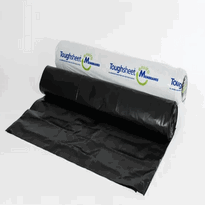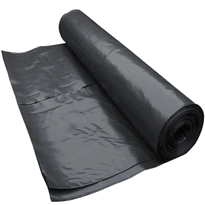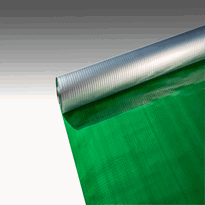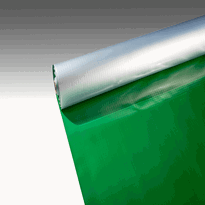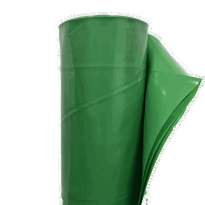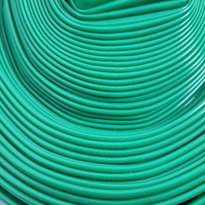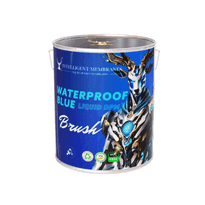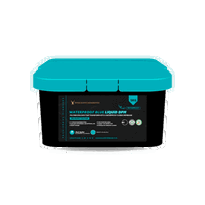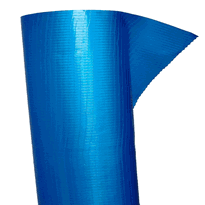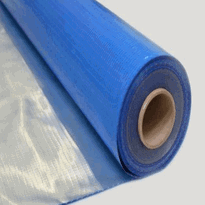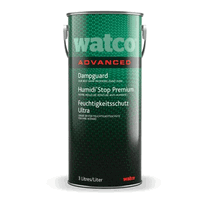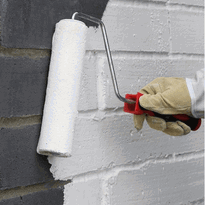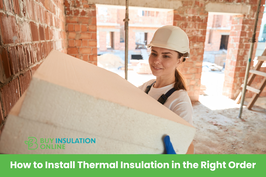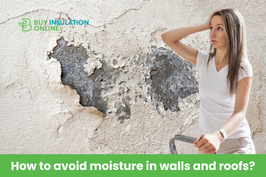Damp Proof Insulation
Damp proof insulation comprises various materials such as membranes, sprays, and barriers designed to prevent moisture from causing damage to buildings. Common solutions include polystyrene boards, vapour barriers, and closed-cell spray foam, which are known for their high water resistance and effective insulation properties.
Proper installation of these systems is crucial to halting rising damp, managing vapour movement, and safeguarding walls against water damage. The effectiveness of these materials hinges on their moisture resistance and vapour permeability.
Understanding these key aspects is essential when selecting appropriate damp proof solutions. Explore further for in-depth insights into the various options available for effective moisture control in your property.
Types of Materials Used for Damp Proof Insulation
Different materials are utilised for damp proof insulation, each offering distinct advantages depending on the application and environment.
Fibreglass insulation is a cost-effective option that's widely used. It doesn't absorb water or encourage mould in humid areas, but it requires proper installation and the use of vapour barriers in particularly damp environments.
Cellulose insulation, which is made from recycled paper, is environmentally friendly and creates an airtight seal that helps to minimise moisture infiltration. However, it should be noted that it doesn't act as a vapour barrier on its own.
Mineral wool is highly regarded for its fire resistance and moisture resistance, making it a durable choice for challenging conditions.
Polystyrene foam boards, available in both expanded and extruded forms, provide high insulating values and are moisture resistant. They're often employed in external wall insulation applications.
These materials offer homeowners a range of options tailored to their specific requirements, comfort, and budget. [Proper installation and maintenance are essential to maximize their effectiveness in damp proofing and moisture control.
How Damp Proof Insulation Works to Protect Buildings
Damp proof insulation plays a crucial role in creating a barrier that prevents moisture from penetrating and damaging building structures. It provides both a physical and capillary break, effectively reducing groundwater absorption through the pores of concrete and masonry. Newer buildings are often designed with advanced waterproofing materials, making damp proof insulation even more effective in modern constructions. Installed at key locations, such as between the footing and foundation walls, damp proof insulation helps to stop rising damp. It acts as a barrier against moisture migration through walls, significantly lowering the risk of damage. The use of diffusion-permeable materials allows walls to dry out, minimising the build-up of moisture, while also working in conjunction with drainage systems around foundations to alleviate moisture load. Furthermore, damp proof insulation manages vapour flow, enabling controlled movement to prevent condensation. When combined with other protective measures, such as damp proof courses and effective drainage, it enhances overall damp protection. This integrated approach is essential for maintaining dry, stable environments, ensuring safe and comfortable spaces for everyone inside.
Key Performance Metrics for Effective Damp Proofing
Key performance metrics are vital for assessing the effectiveness of damp proofing solutions in buildings. These metrics encompass thermal resistance ratings, which evaluate the efficacy of insulation, and vapour permeability standards that dictate how moisture traverses through materials.
Additionally, moisture resistance levels indicate the ability of materials to thwart water ingress. Understanding how moisture behaves within building assemblies is essential for selecting appropriate damp proofing strategies. A comprehensive understanding of these metrics is crucial for ensuring that damp proofing methods deliver dependable, enduring protection.
Thermal Resistance Ratings
Thermal resistance ratings, commonly expressed as R-values, are vital for assessing how effectively damp-proof insulation can minimise heat transfer. Elevated R-values signify superior insulation performance, aiding in the maintenance of comfortable indoor temperatures. R-values measure the resistance to conductive heat flow, which is an essential factor in determining insulation effectiveness in damp-proofing. However, various factors can influence R-values, including the type of insulation, its thickness, density, and the presence of moisture, which can diminish its effectiveness. The proper installation of insulation is equally important; inadequate installation can result in gaps and thermal bridges that reduce overall performance. In multilayer systems, R-values can be combined, leading to enhanced resistance overall.
Envision snug, energy-efficient spaces where moisture doesn't compromise comfort.
Feel assured knowing your insulation is of the highest quality and efficiency.
Understand that you're fostering a safe, healthy environment for all occupants.
Join a community that prioritises sustainable and durable building solutions.
Vapor Permeability Standards
Vapor permeability standards are crucial in assessing how effectively damp-proof insulation manages moisture movement within building assemblies. These standards rely on permeance ratings (measured in perms) derived from ASTM E96 testing, which aids in the classification of materials.
For instance, Class I materials are nearly impermeable, while Class III materials are semi-permeable. Materials with higher perm ratings facilitate more vapour passage, which is essential for drying processes.
Class |
Perm Range |
Example Material |
| I | 0.1 or less | Polyethylene film |
| II | 0.1 - 1.0 | Asphalt-backed kraft paper |
| III | 1.0 - 10 | Latex paint on plasterboard |
Understanding these classifications assists in selecting the appropriate materials for effective moisture control in various construction applications. Proper use of vapour barriers can significantly enhance the durability and performance of building structures, particularly in regions where moisture ingress and condensation are concerns.
Moisture Resistance Levels
Moisture resistance levels are vital indicators of how effectively damp proofing materials and systems prevent water and moisture from infiltrating building components.
Reliable damp proofing hinges on the installation of continuous barriers, such as Damp Proof Courses (DPC) and membranes, applied without gaps. External treatments, including rendering or cladding, provide additional layers of protection.
Roofing systems incorporate waterproof membranes along with suitable coverings to prevent leaks, while insulation featuring vapour control layers effectively manages indoor moisture, thereby minimising the risk of condensation.
The effectiveness of moisture resistance is contingent upon thorough site preparation and the selection of materials that are appropriate for the specific ground and contaminant conditions.
Moisture resistance levels are regularly tested and certified to meet industry standards, ensuring consistent performance over the lifespan of the building.
Protects homes and loved ones from expensive water damage
Ensures healthier living environments free from mould
Instils confidence in the longevity of your property
Fosters a safer, more secure community
Suitable Applications for Damp Proof Insulation
Damp proof insulation is essential in various applications where it's crucial to prevent the transfer of dampness to protect building structures.
In flooring applications, damp proof membranes (DPM) are installed beneath concrete slabs to inhibit ground moisture from rising. These membranes are particularly important in new constructions and work effectively with concrete floors, creating an impermeable barrier. DPMs are usually made from materials such as polyethylene or bituminous membranes, which are durable and waterproof.
For wall construction, damp proof courses (DPCs) are fitted horizontally to prevent rising damp, utilising materials such as plastic or bitumen for long-lasting protection. Below-grade walls and basements also require damp-proof coatings, including asphalt emulsions or polyurethane foam applied externally.
When retrofitting solid walls, external waterproofing and internal insulation are necessary, especially in older buildings. These methods are effective in keeping moisture at bay, ensuring the durability and integrity of the structure. [Proper drainage systems and guttering also play a crucial role in reducing water ingress, complementing the damp proofing measures.
Benefits of Using Closed-Cell Spray Foam for Damp Proofing
Closed-cell spray foam offers numerous advantages for damp proofing, making it an increasingly popular choice in construction and renovation projects across the UK.
Its dense, enclosed cell structure provides exceptional water resistance, effectively preventing moisture from penetrating walls and floors. Furthermore, it serves as a vapour barrier with very low permeability, ensuring that water vapour is kept at bay, thus averting issues such as mould or wood rot. This low permeability is crucial in maintaining a dry interior environment, especially in areas prone to high humidity. This water resistance contributes to long-term dryness, fostering healthy and structurally sound environments.
It creates a robust bond with various surfaces, helping you feel secure in your living space.
It reinforces walls and floors, providing added stability and peace of mind.
It blocks drafts and leaks, promoting a warm, energy-efficient atmosphere.
It safeguards against mould, mildew, and moisture-related damage, ensuring comfort and safety in your home.
Factors to Consider When Selecting Damp Proof Insulation
Selecting the appropriate damp proof insulation requires careful consideration of several key factors that impact both its performance and longevity.
One crucial aspect is thermal performance, which is indicated by the R-value. This value reflects the material's resistance to heat flow. A higher R-value is beneficial as it helps to minimise condensation by maintaining consistent surface temperatures, particularly in humid environments. Insulation materials such as closed-cell foam provide excellent thermal resistance and moisture management. Additionally, proper thermal insulation can reduce energy costs and improve overall comfort.
Moisture and vapour permeability are also significant considerations. Low-permeability materials serve as effective vapour barriers, preventing moisture accumulation, while others can absorb and release moisture without sustaining damage.
The specific environment plays a vital role in material selection; for instance, areas exposed to outdoor conditions or high moisture levels necessitate the use of moisture-tolerant options like foam boards.
Proper installation and sealing are essential to ensure the durability and effectiveness of the damp proofing. Additionally, considerations of cost and the environmental impact of materials will guide the optimal selection for each individual project.
Installation Best Practices for Damp Proofing Solutions
Proper installation is essential to ensure the effectiveness and durability of damp proofing solutions. Correct surface preparation creates a strong foundation for membranes, sealants, and insulation. This involves clearing debris, repairing cracks, and ensuring surfaces are dry and stable. Research showsthat proper surface preparation significantly prolongs the lifespan of damp proof systems.
When installing damp proof membranes, overlap edges by at least 100 mm and seal all joints with high-quality tape or adhesive to prevent leaks. It’s crucial to secure penetrations such as pipes and use membranes that possess sufficient strength to support concrete loads.
Additionally, applying external wall coatings and addressing any defects on the exterior can help protect against water ingress.
Belonging becomes stronger when everyone follows these practices:
Properly prepare surfaces for better adhesion and sealing
Use quality materials to establish lasting moisture barriers
Seal all elements meticulously to avoid future issues
Consistently monitor and maintain to safeguard your home’s integrity
Limitations and Environmental Considerations
Many damp proof insulation materials encounter limitations concerning their environmental impact and long-term performance. Certain materials, such as plastics and chemicals, can be detrimental to the environment throughout their production, usage, and disposal.
Additionally, prolonged exposure to moisture can compromise the integrity of insulation over time.
These factors underscore the importance of considering not only the initial costs but also the long-term effectiveness and sustainable management of insulation solutions.
It's essential to select materials that balance performance with environmental responsibility, ensuring a healthier living space and a reduced ecological footprint.
Environmental Impact
Environmental impacts of damp proof insulation materials raise significant concerns due to their chemical composition and manufacturing processes. Many conventional products contain volatile organic compounds (VOCs), which can be detrimental to both human health and the environment.
Materials such as polyurethane and epoxy release harmful substances during application, adversely affecting air and water quality. Bituminous options, derived from petroleum, can release pollutants as they degrade, leading to soil and groundwater contamination. Certain chemicals utilised in waterproofing are non-biodegradable, remaining in the environment for extended periods.
Harmful emissions pose risks to indoor air quality and the wider ecosystem
Extraction of raw materials disrupts habitats and contributes to carbon emissions
Non-biodegradable waste accumulates in landfills, enduring for centuries
Limited recycling options result in hazardous waste challenges
These issues underscore the urgent need for environmentally friendly alternatives in damp proofing solutions.
Cost and Application Challenges
Installing damp proof insulation can be both costly and challenging, particularly for those who aren't familiar with the process. The cost of materials can vary significantly; for instance, foam and polystyrene tend to be pricier than fibrous alternatives.
Professional installation is often essential, as the task requires specialised skills, including properly sealing gaps and ensuring even coverage. Additional costs may arise from the need to repair wall cracks or to install moisture barriers prior to placing the insulation.
Retrofitting in existing properties can be particularly complex due to irregular surfaces or structural concerns.
Application challenges also include the necessity of avoiding gaps that could allow moisture to infiltrate, as inadequate sealing may lead to damp issues. Adverse weather conditions and limited access can further delay or complicate the installation process.
These factors contribute to the overall expense and necessitate meticulous planning to prevent future dampness and the damage it can cause.
Enhancing Moisture Resistance With Combined Insulation Systems
Combining various insulation and waterproofing systems can substantially enhance moisture resistance in buildings.
When vapour barriers collaborate with insulation, they effectively obstruct moisture from infiltrating building envelopes. Closed-cell spray foam insulation offers excellent moisture resistance alongside a high R-value, thereby enhancing thermal performance.
When properly installed, waterproofing combined with insulation can reduce energy costs by minimising heat loss. These integrated systems help maintain dry interior spaces, preventing mould growth and unpleasant odours, particularly in damp environments such as basements.
Feel assured that your home is safeguarded against moisture and mould.
Enjoy the tranquillity that accompanies a robust, moisture-resistant building.
Experience greater comfort, knowing that your insulation operates effectively.
Become part of a community that prioritises safe, enduring homes.
Conclusion
Damp proof insulation plays a crucial role in safeguarding buildings from moisture damage. Selecting the right materials, such as closed-cell spray foam, and adhering to proper installation techniques ensures effective moisture barriers.
While it provides significant advantages, it’s essential to consider environmental factors and limitations. Combining various systems can further enhance moisture resistance.
Overall, choosing suitable damp proofing solutions is vital for maintaining building integrity, extending its lifespan, and preventing expensive repairs associated with excess moisture.
